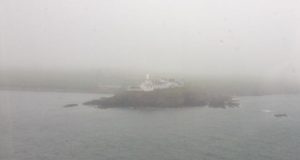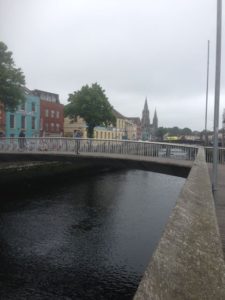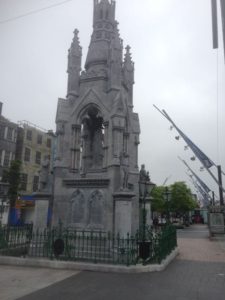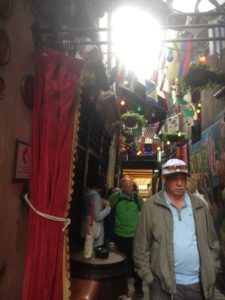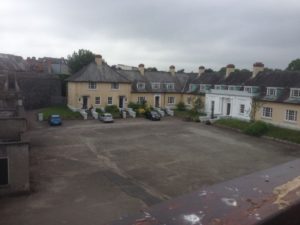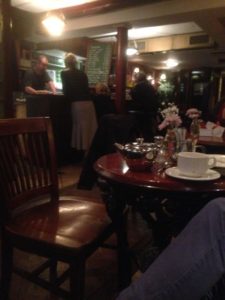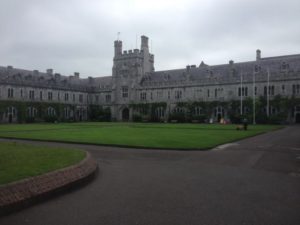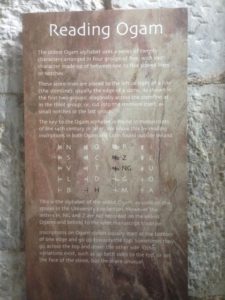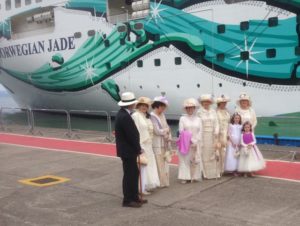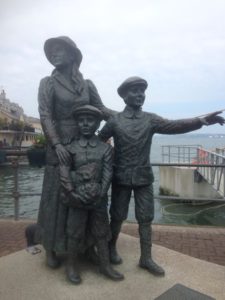We landed in Cobh Island, the second largest deep-water port in th world after Sydey, Australeaoutside of Cork Ireland where Irish immigrants set sail for America during the potato famine and where victims from the Lusitania disaster were brought ashore. When we arrived, we discovered we had to take a train into Cork city (10E RT each and about 30 min). The walk from the train station to the town center was about another 20 min.
We made a reservation for a Cork Walking Tour that met in front of the Filte Irish Information Center on the Grande Parade, just down from the English Market. It was one of the best the best things we’ve booked so far. Jack was incredibly knowlegeable about Irish history and Cork.
Cork was called Corky because it was marshlands. The River Lee forks around Cork and run around and under it.
Cork is a huge IT center, largely because it is tax free. Apple has its European center here, employing 7 thousand people.
So for the history. The Celts have been in Ireland from 400 BC.. The Celts accepted Christianity in the 5th century AD and were a center of monastic life and knowledge during the Dark Ages in Europe. The Vikings raided regularly and were responsible for the founding of major cities such as Dublin and Waterford.
The Normans invaded in 1185 from France and captured both England and Ireland. French was the official language of both Ireland and England. They built a walled city in Cork and disenfanchised the Celts but eventually intermarried with them so that the two cultures merged Celtic/Norman until Henry VIII split Catholic and Protestant and the Celtic/Normans were thrown off their land and the Ulster Plantation was introduced, in which Protestants were given Irish land. An English general was automatically given thirty thousand acres of land in Ireland on retirement and a soldier was entitled to one thousand acres after ten years of service.
After the Battle of the Boyne, Cork is influenced by Dutch style. Butter was one of the main exports to Holland.
From 1700s to 1822, Catholics were not allowed to worship or be educated and because of laws that required them to divide their land between their male heirs, few Irish owned enough land to farm by the time of the potato famine in 1845. The population of Ireland was nine million before the famine and four million today. The lost 3 million people in four years, 1.5 million to emigration and 1.5 million to starvation (in a country that exported million of pound of wheat, beef and mutton to England during that period).
Angela’s Ashes was filmed in the narrow streets of Cork.
We visited Elizabeth Fort, built in the 1600s which was used as a holding place for 7 thousand women prisoners from age 20-30 before they were shipped off to Australia, a culling of the prison population. Seventy thousand Irish were sent to Botany Bay to get rid of undesirables. In Sydney women could be bought of 5 pounds. Women were called POM because they were prisoners of her majesty.
Elizabeth and Phillip of Spain hated each other and Spain hoped to invade vie Ireland since with west of England wasn’t defended but the Spanish Armada which was supposed to land in Catholic Donegal was forced into Protestant Kinsale by a storm and defeated.
After the walking tour, we had a great lunch in a pub he recommended, the Long Valley, seafood chowder, corned beef sandwich and in Cork, Murphy’s rather than Guinness.
We walked to the university to see their collection of ogam stones.
Back at the ship, I wandered through Cobh Village with its memorial to the victims and survivors of the Lusitania and where boat trips to Star Island, with its star shaped fort are available.
A group of costumed villagers wandered from the village down to the boat to pose for pictures.




